Lee S. Forsberg
New Member
Need a good alloy for HP cast bullets. Using a handgun, 9mm, 380, 38/357, 45ACP, 45colt, 44 spc/mag. Any ideas?
Thanks
Lee
Thanks
Lee
Last edited:
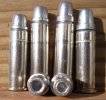
Exactly one HP experience. Lyman 308291 air cooled older clip on WW plus about 2% tin. Fired in a 26"? barreled Model 94 30-30 with 26.5 grains of H335, should have been tickling 1,900 at the muzzle. Doe at 42 paces slightly quartering away, full penetration with exit much like a Nosler Partition bullet. Looked like a .30 caliber wad cutter punched out the far side surrounded by 5 smaller exits in a halo from pieces of the nose. Substantial internal damage, deer dropped in sight after a short run, perhaps 20 yards?Depends. Alloy needs to be matched to HP size and impact velocity.
My experience tells me that softer is better than harder for HP. Too hard and they will expand but the nose blows off.
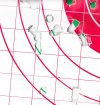
Thanks to all for the responcese. Hope to see more.
My question is a result of an experience I had with HP cast bullets in a .357 Mag rifle, 20" barrel. Using Lyman 358156 HP mold. Bullets cast of wheel weights, sized to .358", lubed and gas checked. Loaded with 16gr of 296. The Rabbits that day were all dead. However, upon inspection all the holes were the same size entrance or exit. So I lined-up on ceder fence post. After retrieving the bullet I could have loaded and shot it again! No expansion and the nose did not separate. As time consuming as they are to cast and no expansion I abandoned that HP mold. The solids were, and still are, killing everything I shoot with that rifle.
Time has past hopefully bringing some improvements with it's passing. HP bullet molds are much faster to cast with and more accurate. Some basics seem to be the same, alloy, velocity, and cavity size and configuration. One other advancements is Powder Coating, not nearly as messy bullet lube. As to it's effect on HP expansion, I don't know.
Looking forward to more comments on this subject.
The following is my experience with Rick's RCBS 44 caliber 300 SWC mold that was HP-ed by Eric.The molds I've sent to Erik for HP'ing I had made to what I call the Fryxell profile HP. Glen had worked this out for his HP bullets.
For my 44 Cal bullets . . .
HP cavity of .150" at the mouth, cavity with a 7-degree taper extended .250" into the bullet with a rounded tip. A flat bottom HP cavity has a sharp edge at the bottom of the cavity and is where the nose will crack first and break off.
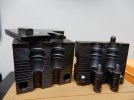
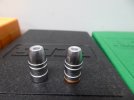
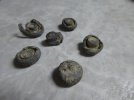
One of the things I want to test with hollowpoints is if powdercoat could possible slow initial expansion of hollowpoints is soft media. I'm not talking a big difference, just an itty-bitty tiny amount. I suspect any possible difference would be unmeasurable.P/C has zero affect on what the bullet does or doesn't do.
CW's numbers above are what i would consider the upper end, and some of them will need a gas check to do their best most efficient work.
